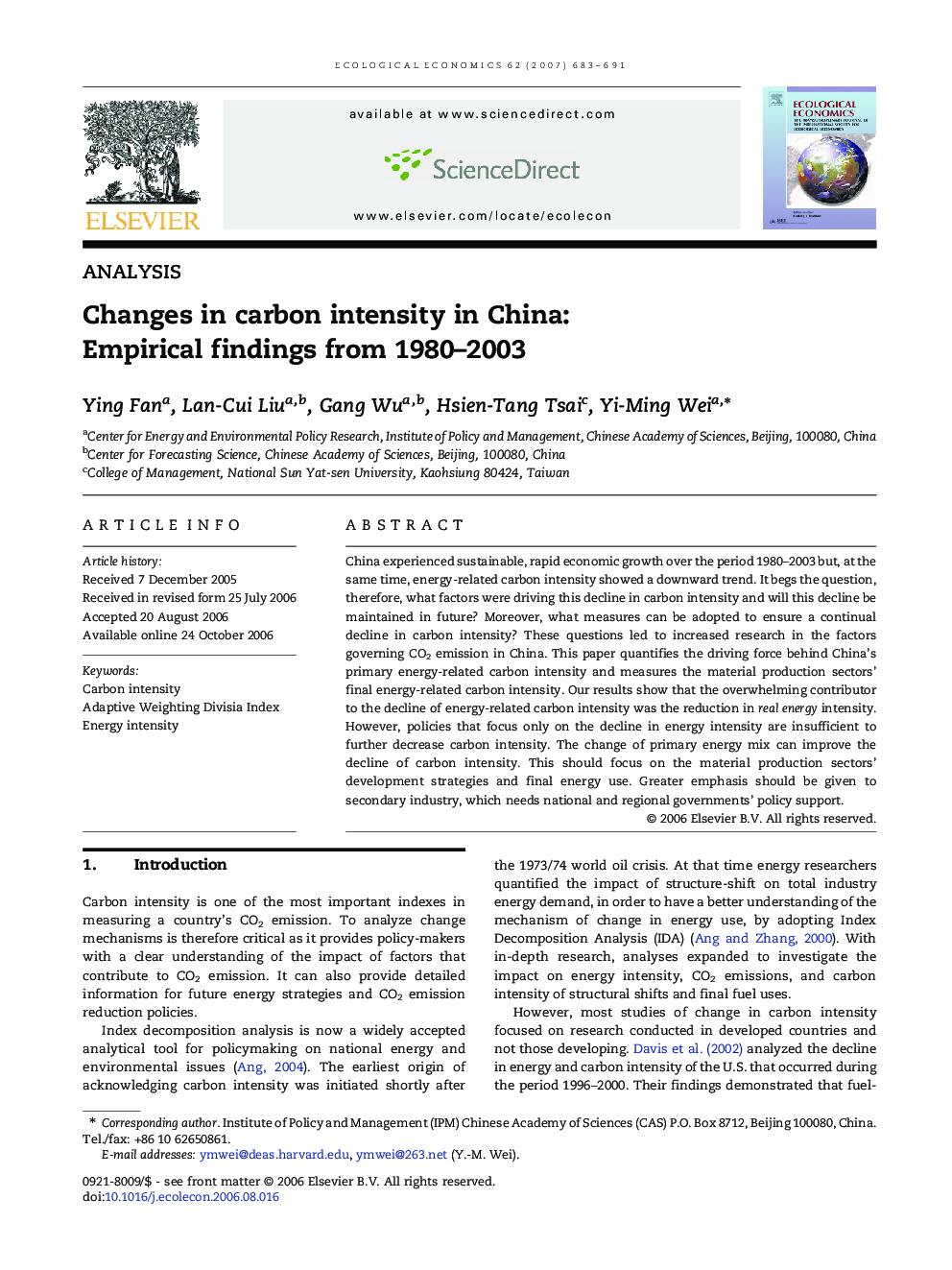| Article ID | Journal | Published Year | Pages | File Type |
|---|---|---|---|---|
| 5051962 | Ecological Economics | 2007 | 9 Pages |
China experienced sustainable, rapid economic growth over the period 1980-2003 but, at the same time, energy-related carbon intensity showed a downward trend. It begs the question, therefore, what factors were driving this decline in carbon intensity and will this decline be maintained in future? Moreover, what measures can be adopted to ensure a continual decline in carbon intensity? These questions led to increased research in the factors governing CO2 emission in China. This paper quantifies the driving force behind China's primary energy-related carbon intensity and measures the material production sectors' final energy-related carbon intensity. Our results show that the overwhelming contributor to the decline of energy-related carbon intensity was the reduction in real energy intensity. However, policies that focus only on the decline in energy intensity are insufficient to further decrease carbon intensity. The change of primary energy mix can improve the decline of carbon intensity. This should focus on the material production sectors' development strategies and final energy use. Greater emphasis should be given to secondary industry, which needs national and regional governments' policy support.
